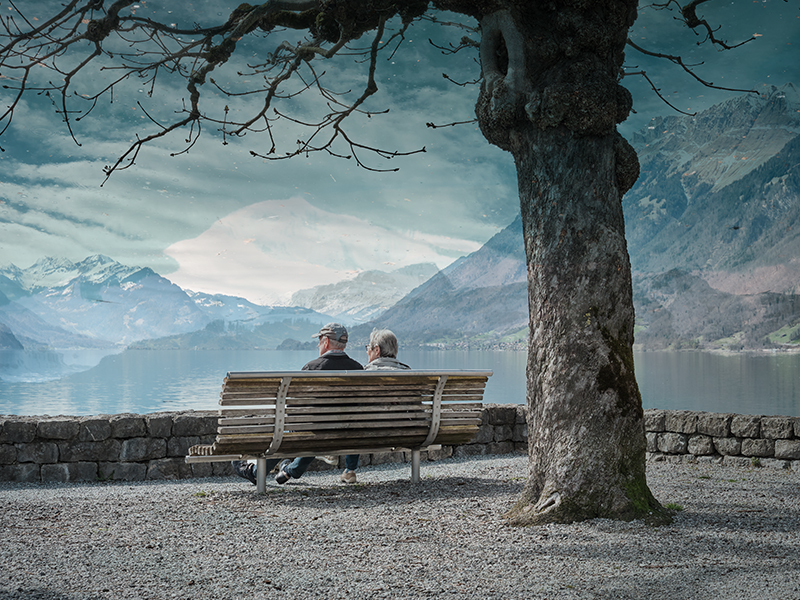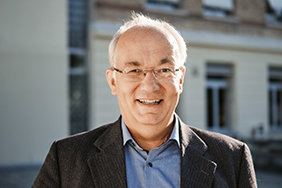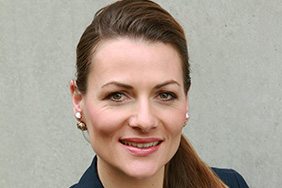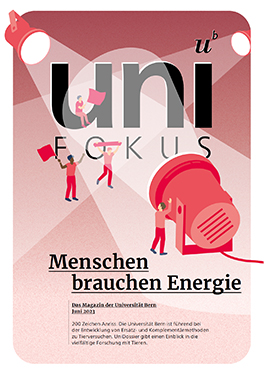Science of religion, brain research, theology, psychology
What is life energy?
Is it a spiritual force? God? Resonance? Functioning neurons in the brain? Motivation? A theologian, a psychotherapist, a neuroscientist and a religious scientist examine the term “life energy” from different perspectives.

Prana. Qi. Ki. Lung. These are all names for life energy – from Indian, Japanese, Chinese and Tibetan traditions. Here in Switzerland, we encounter prana in yoga and qi in traditional Chinese medicine. According to these traditions, life energy flows through the body and can be controlled and cultivated to make people feel good. This can be done through nutrition (ayurveda), body and consciousness practices (yoga, qigong) and healing methods (acupuncture).
Spirituality from East Asia
But while the idea of this all-encompassing life energy, which includes a spiritual force, is omnipresent and concrete in East Asia, this concept is less present and not clearly defined in this area of the world, especially not in science. This was not always the case, as religious scientist Jens Schlieter knows: “In the 19th century, many biologists and physicians in Europe shared the idea of a life energy that permeates everything organic and is responsible for keeping people alive.” Behind this was Plato’s idea of the Earth having a common soul. In the 20th century, however, the biomedical concept of the body became established, which speaks of the functioning of all life-sustaining organs and – unlike the vitalism of the 19th century – does not assume that there is an independent life energy.
Subscribe to the uniAKTUELL newsletter

Discover stories about the research at the University of Bern and the people behind it.
Life energy in alternative spiritual circles
Nevertheless, says Jens Schlieter, the East Asian idea of life energy has also found its way into our worlds of life: in and through alternative spiritual circles. “In the contemporary alternative-spiritual scene, many phenomena are explained by life force or life energy, from insomnia and other physical and psychological ailments to conflicts that cannot be controlled.” According to Schlieter, this is very similar to classical Tibetan or Chinese medicine, which sees the cause of psychological and physical problems in an energetic imbalance.
About the person

Jens Schlieter
is Associate Professor of Systematic Religious Studies and Executive Director at the Institute for the Science of Religion. His research includes Indo-Tibetan Buddhism, spiritual practices in the West, and the interface between religion and philosophy.
“How do I get energy?
In and around rivers: swimming, kayaking, walking along the banks.”
He finds it exciting that completely new things are happening in the spiritual-alternative scene in Switzerland. “There is a great deal of interest in transformative experiences, such as meditation or sweat lodge ceremonies, that can change our view of the world and ourselves.” This also gives rise to new therapeutic practices for mainstream society, such as diets that combine Ayurvedic and Chinese views of energetic foods with Western ideas.
Psychedelic substances
Psychedelic substances for expanding consciousness were first tried out in alternative circles and have now arrived in psychiatric practices, says Schlieter. Psycholytic therapy with LSD or psilocybin is also intended to solve blockages and internal conflicts.
Theological perspectives
The concept of life energy also plays an important role in theology in this country – albeit with different images and terminology than in East Asia. Theologian Evelyn Krimmer explains that the Hebrew word “nephesh” is to be found in the Old Testament. It stands for man as a whole, under the specific aspect of the will to live, as well as for man’s throat, symbolically the desire for water and breath.
About the person

Evelyn Krimmer
is a lecturer in Religious Education at the Institute of Practical Theology and main expert in the field of religious studies in the canton of Bern. Among other things, she researches how pupils see religious education as well as the theory of religious socialization, education and tolerance education in pluralism.
“What gives me energy?
Intense moments in prayer and worship, sport and exercise in nature, looking in amazement at the starry sky, time with my family, when something succeeds.”
Martin Luther translated “nephesh” simply as “soul”. “If we look behind the term, the key question is what brings people to life,” says Evelyn Krimmer. Theology would suggest you receive life energy from the Creator. “Life energy is unavailable, as we theologians say; in other words, it is promised from the outside and is a kind of gift,” says Krimmer. This is a completely different perspective to the prevailing view in our self-optimized society.
“In Switzerland, you find majorities when measures don’t go too far.”
Isabelle Stadelmann-Steffen
Nevertheless, practical theology also has an idea of how people can acquire energy. It is based on the resonance theory of sociologist Hartmut Rosa, according to whom resonance is something people long for at their core. Such resonant relationships can occur between people – whether with friends, neighbors or in pastoral care – or in connection with fulfilling activities or when people come into contact with something greater than themselves, such as religious experiences, art or nature.
When resonance occurs, it is like an energy booster, then life succeeds. But here, too, the same applies: A conversation with a person can create resonance, although that is not guaranteed. As theologian Krimmer puts it: “Resonance is something isolated that you can’t generate voluntarily or according to plan.” And: it is exactly the resonant relationship with God or nature, which both transcend us, that makes us aware of our limitations. “Accepting my own limited possibilities can have a relieving effect and free me from thinking about being able to do everything and having to do everything,” says the theologian. “There’s a lot of power in that.”
Neuroscience perspectives
Neuroscientist Barbara Studer agrees and adds: “Life energy has a lot to do with hope and the careful use of one’s own resources.” It is important to be aware that not everyone has the same prerequisites for this type of energy. But she also says: “We are in charge of a lot of things ourselves. There are energy boosters or energy inhibitors that work for everyone.” For example, cold showering: This causes dopamine to more than double – and is still detectable after six hours. Put simply: With so many happiness hormones, we feel more energized.
Nature as an energy booster
Nature is also an energy booster: After just ten minutes in the forest, a significant reduction in the stress hormone cortisol can be measured in a person’s blood. In other words: less stress, more vitality. On the other hand, if we read too much negative news, it drains us of energy. This is because the anxiety center in the brain – the almond-shaped amygdala – is activated and requires resources that other brain structures lack. In addition, cortisol and adrenaline are released.
All of this can be seen in blood or brain scans. Neuroscientist Studer explains that the aim is to achieve a good mix of strengthening hormones in the brain so that the neurons can work in the best possible way. “Then we have more emotional and mental resources.” In the vernacular, you would say: We have more energy.
About the person

Barbara Studer
is a lecturer at the Institute of Psychology, in the Health Psychology and Behavioural Medicine department. Founder and CEO of www.hirncoach.ch, a spin-off of the University of Bern. Her research includes cognitive and multimodal training, self-regulation and the promotion of creativity.
“How do I recharge my batteries?
I sing on my way to the office, spend a lot of time outdoors with my children, dance with my husband, jog and pray.”
Dancing, singing, cheering for the brain
Overall, neuroscience underpins what we all feel in our daily lives when we pay attention to our energy balance. “The quick bursts of energy,” stresses Studer, “are the biggest fallacy.” coffee, sugar, social media, gaming.
What releases dopamine in the short term then inhibits dopamine production, so we need more and more kicks. In the long term, it leads to dependence, exhaustion and dissatisfaction.
“In Switzerland, you find majorities when measures don’t go too far.”
Isabelle Stadelmann-Steffen
If we feel we don’t have enough energy, it would make more sense to go out on the balcony and sing a song. “Music also ‘massages’ the brain in the emotional center, in the limbic system,” explains Ms. Studer. “Not many activities manage to do that.” This activates reward hormones that give us hope and energy. The influence of our posture and breathing is also impressive: “When we breathe consciously and adopt a proud attitude, we send a signal of courage and confidence to the brain.” The opposite is achieved if we sit doubled and look down. “I love these simple tricks that we can easily integrate into our everyday lives,” says Ms. Studer.
Psychotherapeutic approaches
Psychologist Martin grosse Holtforth brings an additional level and a new term into play: motivation. “This plays a key role in psychotherapy.” You could also describe it as “energy” in the sense of: what drives me. According to Viktor Frankl, survivor of four concentration camps during the Second World War and founder of existential psychology, humans can endure almost anything if they have a “why”. Grosse Holtforth explains that research has also shown that spiritual and religious people, for example, are more able to cope better with torture.
In psychotherapy, however, it is important to differentiate whether patients are driven by reasons of avoidance or proximity: “Both avoiding something like emotional pain or injury and striving for love or control, for example, can release a lot of energy.” According to psychology, what drives all people is the fulfillment of our basic physiological and psychological needs, including attachment, orientation and control, pleasure and self-esteem. Unfulfilled basic needs are the ground on which mental disorders can develop.
About the person

Martin Grosse Holtforth
is Associate Professor and lecturer at the Institute of Psychology in the department of Clinical Psychology and Psychotherapy, research director at the Psychosomatic Competence Center of Inselspital as well as psychotherapist and supervisor. Among other things, he conducts research on the process and results of psychotherapy as well as on the inpatient treatment of pain disorders.
“How do I get energy?
Reading novels and spending time with friends and my partner.”
Clarify motifs, activate resources
In psychotherapeutic practice, Martin grosse Holtforth tries to pinpoint which needs underlie undesirable behavior and how strongly proximity and avoidance motives work. “It can be very helpful to become aware of your own motives.” The next step is to activate unused resources or build up new ones. This could be just as much training in social skills as involving friends who can help with a particular project.
“The aim of psychotherapy is to help people remove obstacles that make them unhappy and to find ever better ways to become happier,” Holtforth says. Or to put it another way: “If there is a lot that I find attractive and want to achieve, and very little standing in the way, then I have more energy.” And so the discussion draws to a close with the psychologist coming back at the end to life energy.
Magazine uniFOKUS

People need energy
This article first appeared in uniFOKUS, the University of Bern print magazine. Four times a year, uniFOKUS focuses on one specialist area from different points of view. Current focus topic: Energy
Subscribe to uniFOKUS magazine